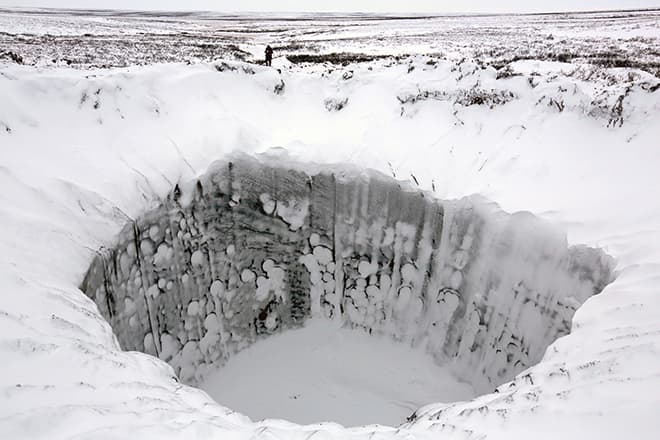Mysterious craters
In the summer of 2014, Russian reindeer herders discovered a large circular hole in the Siberian tundra of the Yamal region. Photographs of the mysterious crater attracted worldwide attention, and fuelled speculation about meteorite impacts or the activities of extra-terrestrial life forms in the area, 2200 kilometres northeast of Moscow. Russian geoscientists then investigated the 50-metre-deep and 30-metre-wide hole during several expeditions. Their findings indicated that the hole was formed when a gas hydrate, i.e. a large bulk of frozen methane and water, thawed to a great depth during permafrost warming. The methane converted from a frozen to a gaseous state, causing it to expand by a factor of 164. It then rose to the surface with a pressure of up to 30 kilograms per square centimetre. There must have been a powerful eruption at the moment when the gas suddenly escaped into the atmosphere. In any case, material from the crater was hurled through the air for a distance of more than 180 metres.
Researchers now believe that these kinds of methane eruptions are a rather common phenomenon in the Siberian Arctic. They presume, among other causes, that many of the lakes found on the Yamal Peninsula today were formed by this process during a warm period in the past.

fig. 3.34 > This crater on the Yamal Peninsula was formed in 2014 when massive amounts of methane gas erupted explosively out of the ground.